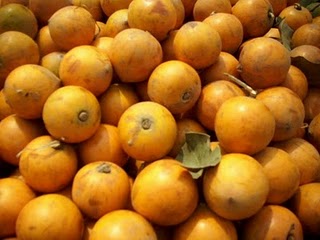
Africa is home to medicinal plants and fruits, some of which cannot be found in other parts of the world. It is common knowledge that traditional medicine is effective and remains a major source of remedies for the continent, servicing the needs of up to 80% of the population.
Generally, fruits provide essential vitamins, fibers and other substances that are important for good health. Most fruits are naturally low in fat and calories, and are filling.
The White Star Apple, Nigeria’s own local “cherry”, is distributed throughout the southern part of Nigeria. Botanically called Chrysophyllum Albidum, in the Southwestern region of Nigeria the fruit is called Agbalumo, and in the Southeastern region of Nigeria it is popularly known as Udara.
The White Star Apple is a popular tropical fruit tree widely distributed and found in the low land rain forest zones in Nigeria. It is considered a super fruit because of the health benefits attached to it. This fruit, though also found in urban areas, is predominantly cultivated in rural areas with harvest falling between the months of December and April. The fruits are not usually harvested from the trees; rather they are allowed to ripen on the tree and drop naturally to the ground where they are collected (point of harvest) for consumption or commercial purposes.
The fruit is widely distributed across states of the nation. The immature fruits are not eaten because they contain unpalatable sticky latex. Morphologically, the White Star Apple tree is a giant tree often reaching the height of 30meters and found widely distributed in the tropics. Its fruit is an edible drupe that contains one to six seeds with a fleshy pulp and an outer part of a colour in between light yellow and brown.
The White Star Apple has a good number of health benefits. It lowers blood sugar and cholesterol and helps in the prevention and treatment of heart diseases as shown by a recent study. Also, the White Star Apple has a high concentration of ascorbic acid (Vitamin C) which prevents scurvy, a disease of gums, bones and blood vessels, and increases the body’s resistance to infections. In traditional medicine, the roots, barks and leaves of the White Star Apple are used for treatment of diseases like malaria, yellow fever, skin eruption, stomachache and diarrhoea. It can also be used to treat diabetes and drug resistant bacteria. Calcium, potassium, phosphorous, magnesium, tannins, flavonoids, terpenoids amongst others are found in this fruit.
Little wonder it is considered a super fruit!


